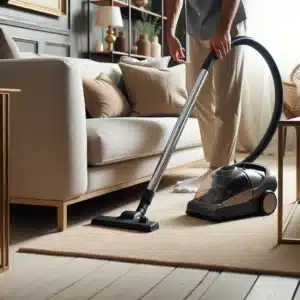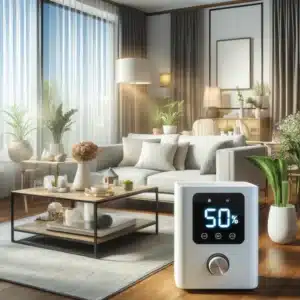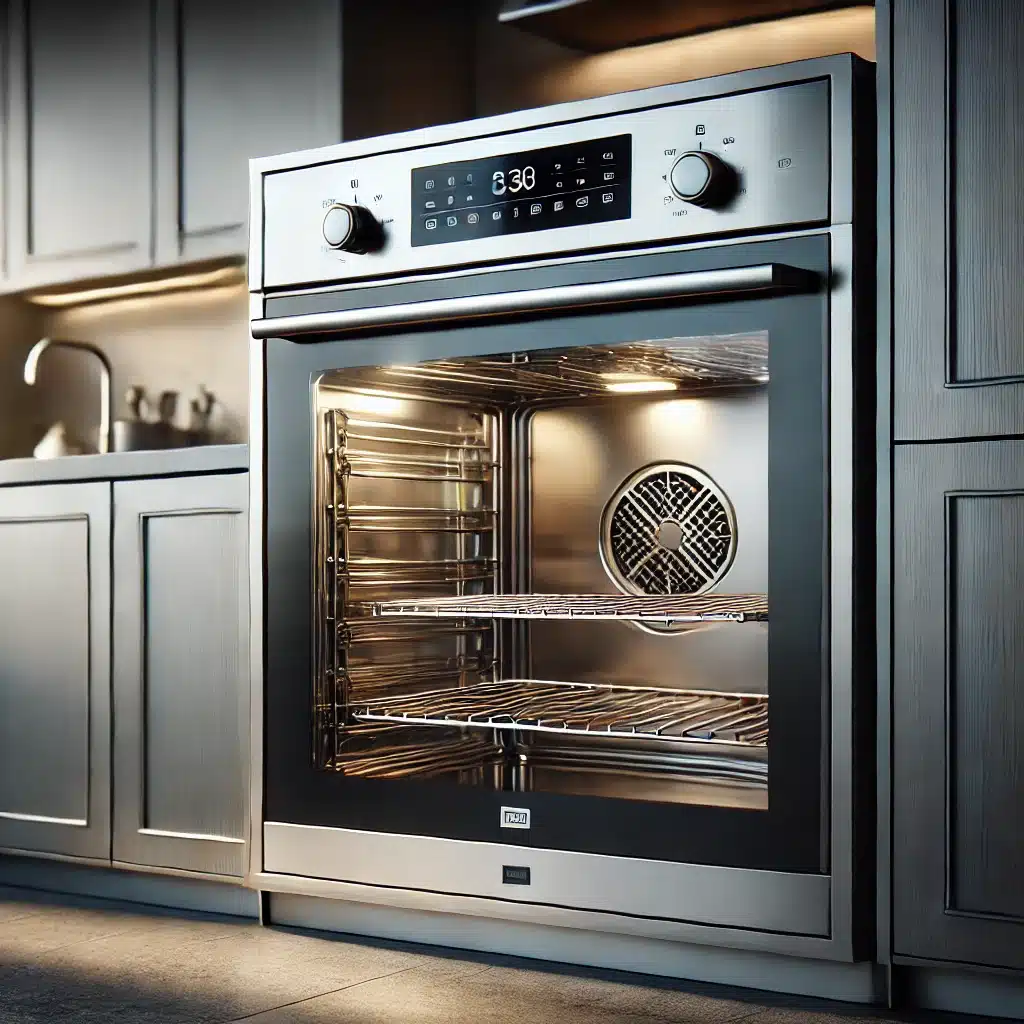Cleaning your home is more than just a task to keep things looking neat; it’s about creating a healthier environment for you and your family. However, even the most diligent among us can fall into certain traps that make our efforts less effective, or worse, counterproductive. Here’s a rundown of the top five home cleaning mistakes you might be making and how to steer clear of them to keep your living space sparkling and safe.
1. Overusing Chemical Cleaners
When it comes to house cleaning, the common practice of reaching for chemical cleaners is rooted in the belief that their potency equates to better cleaning. This is a widespread misconception that can actually be more harmful than beneficial. While these powerful chemicals can swiftly tackle grease and grime, they don’t vanish without trace once you’re finished. Residues from these cleaners can remain on surfaces and in the air long after the cleaning is done. These residues might not only contaminate the air that circulates in your home but can also come into direct contact with your skin, posing potential risks of irritation or even causing respiratory problems.
Adopting a healthier approach to house cleaning by utilizing natural cleaning agents can significantly mitigate these risks. Natural ingredients such as vinegar, baking soda, and lemon juice have been trusted for generations to effectively clean homes without the harsh side effects associated with chemical cleaners. For example, vinegar is excellent for producing streak-free windows, and baking soda is a gentle yet effective option for scrubbing tiles clean. Moreover, these substances do not introduce any harmful chemicals into your environment, ensuring that your cleaning practices are safe and beneficial for both your home and the health of its inhabitants.
Additionally, lemon juice offers the dual benefits of potent antibacterial properties and a refreshing, natural fragrance that enhances the overall freshness and appeal of your home. The aroma left by lemon juice after cleaning not only smells clean but also subtly infuses your living space with a crisp, invigorating scent that chemical cleaners can’t replicate.
2. Neglecting the ‘Hidden’ Areas
A common oversight is neglecting areas that aren’t immediately visible. These “hidden” spots, such as the tops of cabinets, underneath heavy furniture, and the seldom-seen sides of appliances, can accumulate significant amounts of dust and grime. Because these areas are out of the usual line of sight, they are easy to forget about, but they are crucial in maintaining a truly clean home.
Integrating these overlooked spots into your regular cleaning schedule is essential for comprehensive home cleaning. It’s not just about aesthetic cleanliness—allowing dust and dirt to build up in hidden areas can lead to a deterioration in air quality and provide a breeding ground for dust mites and other allergens. Tackling these spots doesn’t have to be a daily chore; even addressing them once a month can make a substantial difference.
By extending your cleaning routine to include these critical areas, you ensure a deeper, more enduring clean, promoting a healthier living environment throughout your entire home. This kind of thorough cleaning practice not only enhances the appearance of your home but also supports the well-being of everyone in it.

3. Using One Cleaning Cloth for Everything
In home cleaning, using one cleaning cloth for multiple areas of the house is a frequent yet critical mistake. If you’re wiping down your kitchen counters with a rag and then using the same one to clean the bathroom, you are unintentionally transporting germs and bacteria from one space to another. This common error can essentially negate the benefits of your cleaning efforts by spreading contaminants across different surfaces instead of eliminating them.
The solution to this problem is simple and effective: use color-coded cloths for different cleaning tasks or rooms. For example, you could use blue cloths for the kitchen, yellow for the bathroom, and green for dusting surfaces. This system not only helps prevent the cross-contamination of germs but also organizes your cleaning process, making it more efficient.
Additionally, it is crucial to wash these cloths regularly at high temperatures. This practice ensures that any bacteria or germs that the cloths have collected are thoroughly killed, maintaining the hygiene of your cleaning tools. Implementing these strategies can significantly improve the efficacy and safety of your home cleaning routine, leading to a cleaner and healthier home environment.
4. Ignoring Manufacturer’s Instructions
Ignoring the manufacturer’s instructions during home cleaning can seem like a minor oversight, but it often has serious consequences. Whether you’re handling a new, high-tech mop or using an eco-friendly cleaning spray, each product comes with specific guidelines designed to optimize its effectiveness and ensure safety. Deviating from these instructions can result in damage to surfaces, rendering the product less effective or, worse, completely ruining the finish on furniture or flooring.
To avoid such mishaps, it’s crucial to take a moment to read and understand the manufacturer’s guidelines before using any cleaning tool or product. This approach ensures that you’re not only using the products as intended but also preserving the integrity and appearance of your home’s surfaces. For instance, certain cleaners might require dilution or are only safe for use on specific materials like ceramic or porcelain, not on wood or marble.
Following these guidelines can dramatically enhance your cleaning routine, ensuring that every area of your home is treated properly and maintained in top condition. This simple habit of adhering to provided instructions enhances your overall home cleaning efforts, making them more effective and efficient while safeguarding your home’s various surfaces.
5. Not Cleaning Your Cleaning Tools
An often overlooked aspect of effective home cleaning is the cleanliness of the cleaning tools themselves. It might seem slightly paradoxical, but ensuring that your mops, vacuums, sponges, and other tools are clean is crucial. If these tools are dirty or not properly maintained, they can become counterproductive by redistributing dirt and bacteria around your home rather than removing them. For instance, using a dirty mop can end up spreading dirty water on your floors, and a clogged vacuum might release dust back into the air that you just attempted to clean.
To prevent this from happening, it’s important to regularly wash or replace your cleaning tools. Mops should be rinsed and dried after each use to prevent the growth of bacteria. Vacuum filters need to be cleared out to maintain strong suction and efficiency. Sponges and cloths should be washed in hot water and dried thoroughly or replaced regularly to avoid becoming breeding grounds for germs. By taking these steps, you ensure that your tools remain effective and contribute to a truly clean, healthy living environment. This habit not only enhances the effectiveness of your home cleaning routine but also extends the life of the cleaning tools, making it a practical and hygienic practice.
6. Ignoring Humidity Levels
Ignoring humidity levels during house cleaning is a significant oversight that can have detrimental effects on both the structural integrity of your home and the health of its residents. High humidity creates an ideal environment for the growth of mold and mildew, which can damage walls, ceilings, and floors while also posing serious health risks, especially to those with respiratory issues or allergies.
To effectively manage humidity levels and prevent the associated risks, using dehumidifiers or air conditioners is highly advisable. These devices help maintain a healthy indoor humidity level, ideally between 30% and 50%. This range helps inhibit the growth of mold and mildew, preserving the cleanliness and longevity of your home’s interiors.
Additionally, ensuring proper ventilation is crucial, particularly in areas of your home that are prone to high moisture levels, such as kitchens and bathrooms. Regular use of exhaust fans and keeping windows open when appropriate can significantly aid in ventilating these spaces.

Try Home Cleaning Hive
By steering clear of these common cleaning mistakes, you can significantly improve the effectiveness of your cleaning routine, ensuring that your home is not only visually appealing but also a healthier environment for everyone. These simple yet crucial adjustments in your cleaning practices can make a profound difference in the overall wellness of your living space. It’s important to remember that effective cleaning transcends mere aesthetics; it’s fundamentally about fostering a safe and healthy environment where you and your family can thrive.
To further enhance the cleanliness and hygiene of your home, consider enlisting the help of professionals like Cleaning Hive. Our expert team is equipped with the knowledge and tools to tackle any cleaning challenge, from deep cleaning and allergen reduction to routine maintenance. By choosing our services, you ensure that every corner of your home receives the care it deserves, leaving your space spotless and hygienic without you having to lift a finger.
For those who are curious about more cleaning tips or have specific cleaning dilemmas, don’t hesitate to reach out. Check out the various services we offer at Cleaning Hive to see how we can assist in maintaining a clean and vibrant home. We’re always eager to share our cleaning hacks and help answer any questions you might have. Drop us a comment below or contact us directly—we’d love to hear from you and help make your home cleaning efforts as effective as possible!




